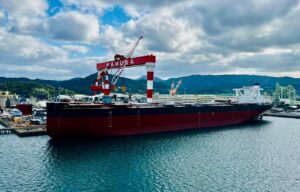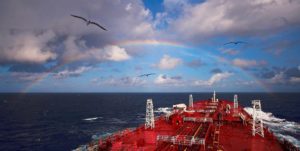The first of AAL’s next generation 32,000 dwt ‘super B-class’ fleet, the AAL Limassol, was floated out into the water from dry dock and moved to pier in late December at the CSSC HuangPu WenChong Shipyard in China.
This marks the third of four crucial stages in her construction prior to delivery and even the most important – the stages comprising steel cutting, keel laying, launching and finally sea trial.
By this stage, approximately three quarters of the work onboard has already been completed and many of the additional work packages can be built simultaneously and later assembled on board, the company said.
Singapore-based AAL anticipates equipment commissioning and mooring trials to take over 120 days. Furthermore, the company expects the first ship of the fleet to be operational by May 24.
“The AAL Limassol will go for sea trial in April 2024 before her delivery to AAL in May, so she will have been on the water for over five months,” noted Yahaya Sanusi, deputy head of AAL’s transport engineering department.
Yahaya Sanusi, added: ‘With all major equipment installed on board, launching provides the perfect test of a newbuild’s water integrity and stability. Once successfully completed, engine shafting, hatch covers, pontoons and even cranes are finally adjusted.”
Rangel Vassilev, director of newbuilding projects at AAL’s sister company, Columbia Shipmanagement, notes that at the yard where the six super B-class vessels are being built, it typically takes about 60 days after launching to prepare a standard container vessel for sea-trial. However, the super-B class is a much more complicated build.
“Its hatch covers, tween decks, three heavy lift cranes – featuring a 700-tonne maximum tandem lift capacity – and the all-new ‘AAL extendable eco-deck system’ must all be in place and tested during this stage and honed prior to sea trial,” he said.
Yahaya Sanusi concluded: “Our next step is to undertake mooring trials of the AAL Limassol’s machinery and cargo handling equipment and prepare her for the final sea-trial stage. At that point, speed, fuel consumption and other manoeuvring characteristics will all be tested.”



